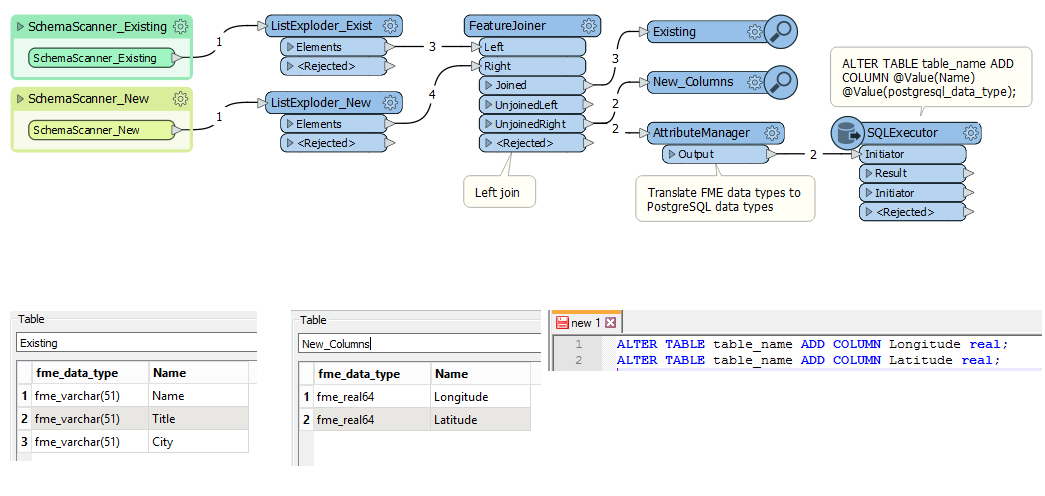Hi,
I am new for using FME to create PostgreSQL database and having trouble updating schema or adding columns to the existing table. so to explain in detail:
1) I have different councils 3 waters pipe data which I want to add to my database
2) I have already done extracting, and transforming of data but now I want to load data coming from different councils into a single PostgreSQL database
3) So I am using FME writer format "PostgreSQL" and table (say Table1) definition as "Automatic" and ok till I have added the data from one council having 52 columns
4) Now when I am trying to add data into same postgresql database table (Table1) from other council having 79 columns in it ... my database is not accepting data from those new columns came from new council 79-52= 27 columns into my existing database table
Any comment or recommendation on this will be great!






